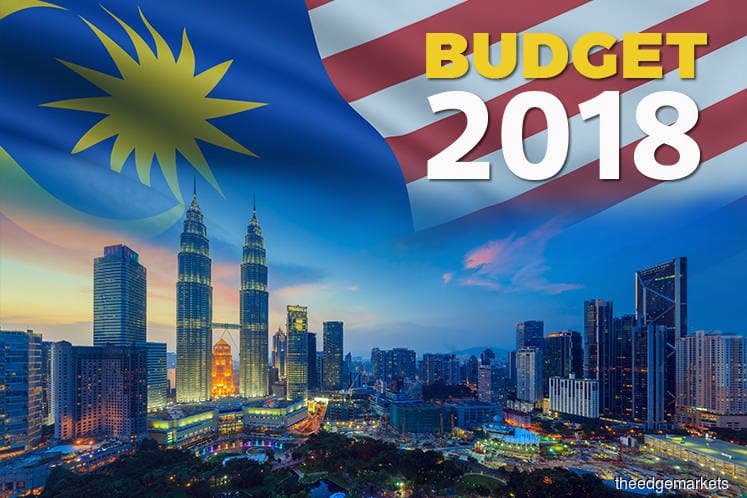
This article first appeared in The Edge Malaysia Weekly on October 30, 2017 - November 5, 2017
AN old complaint about Malaysia’s annual national budget is that 80% to 85% of the spending goes to operating expenses such as paying salaries, pension, interest on borrowings, subsidies and grants, leaving about 15% for development expenditure, which includes education and training, healthcare, housing and transport.
In short, the country spends more on upkeep than investment, which is what will fuel growth and allow it to remain competitive.
Policymakers are aware of this and have been trying to increase development spending. The RM46 billion allocated for development expenditure in Budget 2018 is slightly higher than the revised estimate of RM45.96 billion for 2017 and the RM42 billion spent in 2016. It is a marked increase from the RM39.5 billion spent in 2014 and RM40.8 billion in 2015.
Yet, development expenditure’s share of the budget has fallen to 16.4% for 2018 from 17.3% in 2017 and 16.7% in 2016, though it remains above the 15.3% in 2014 and 15.8% in 2015.
The real issue here is the fact that Malaysia funds its development with debt.
For every ringgit that Malaysia expects to earn and collect next year, 97.7 sen is to be spent on operational expenses. That forces 88% of next year’s development expenses to be paid with borrowings. This is not a new problem.
As a result of Malaysia’s successive budget deficits since 1998, debt service charges are expected to reach RM30.88 billion in 2018 — which means nearly 13 sen out of every ringgit the country earns will go towards servicing its debt. That is as productive as interest paid on credit card debt.
While Malaysia needs to spend more money on economic and social development, there is a limit to how much money can be borrowed to do so. This is likely why development spending has not been able to grow as fast as people would like.
Debt service charges are already more than the RM24.55 billion needed for retirement and pension payments and the RM26.5 billion earmarked for subsidies and social assistance. It is almost the size of the entire RM32.2 billion expected from individual income taxes. The RM30.88 billion needed to service borrowings is also nearly 40% of the RM79.15 billion required to pay emoluments.
The obvious solution is to cut operating expenditure so that more money can be channelled into development spending.
Debt service charges are 13.2% of operating expenses. The largest proportion of operating expenditure comprises emoluments and retirement charges or salaries, pensions and gratuity payments to civil servants, which will take up 43.2 sen of every ringgit the federal government collects and earns in 2018.
Lee Heng Guie, executive director of Socio-Economic Research Centre (SERC), reckons that the increase in the size of operating expenditure for a second straight year to RM234.25 billion in 2018 from RM219.91 billion in 2017 and RM210.17 billion in 2016 “does not reflect fiscal commitment to restrain operating expenditure to keep pace with revenue growth”.
According to him, operating surplus — being the amount of revenue not spent on operating expenses — had shrunk to an average of RM3.6 billion a year between 2008 and 2018 from an average of RM13.9 billion a year between 2001 and 2007.
“This calls for keeping a lean and efficient civil service, supported by e-government services, phased implementation of a defined-contribution public sector pension, stringent enforcement of competitive tender, reprioritising of expenditure in non-core areas and a review of grants to statutory bodies,” says Lee. He reckons that Malaysia is “unlikely” to meet its “near-balanced” fiscal deficit target of 0.6% of GDP by 2020 at the current pace of fiscal consolidation.
While a budget deficit of 2.8% for 2018 is the lowest since 1998, the actual amount of deficit ranged from RM2.3 billion to RM21.12 billion in 2007, but went above RM30 billion in 2008. It reached as high as RM43.7 billion in 2009 before starting to trend lower in 2012 to reach RM37.2 billion in 2015. It has since resumed its assent and is projected to reach RM39.79 billion in 2018.
All Malaysians, including Lee, would hope that the country can attain a balanced budget by 2020 — and put an end to 23 straight years of budget deficits.
Save by subscribing to us for your print and/or digital copy.
P/S: The Edge is also available on Apple's AppStore and Androids' Google Play.